A garden rising from ruin at Chanticleer
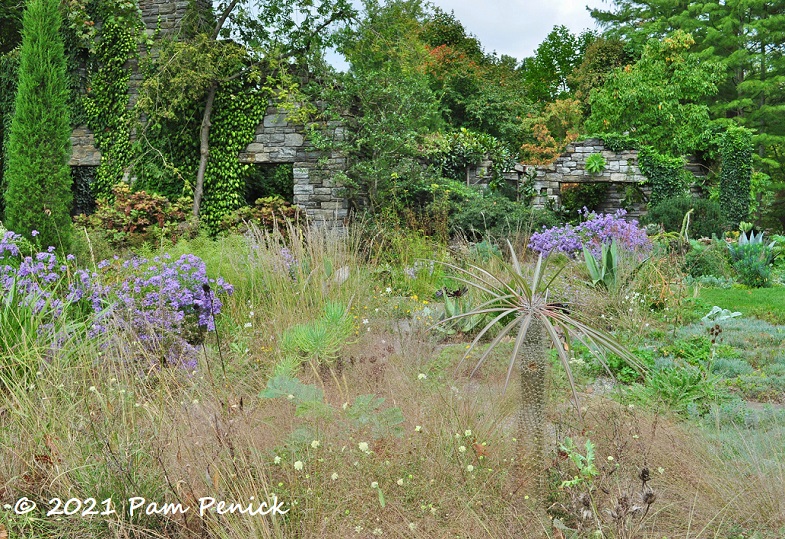
My last post overflowed with images of the glorious gravel garden at Chanticleer, a public garden in Wayne, Pennsylvania, that I visited on my road trip last October. That garden segues right into the Ruin, which I’ll share today.
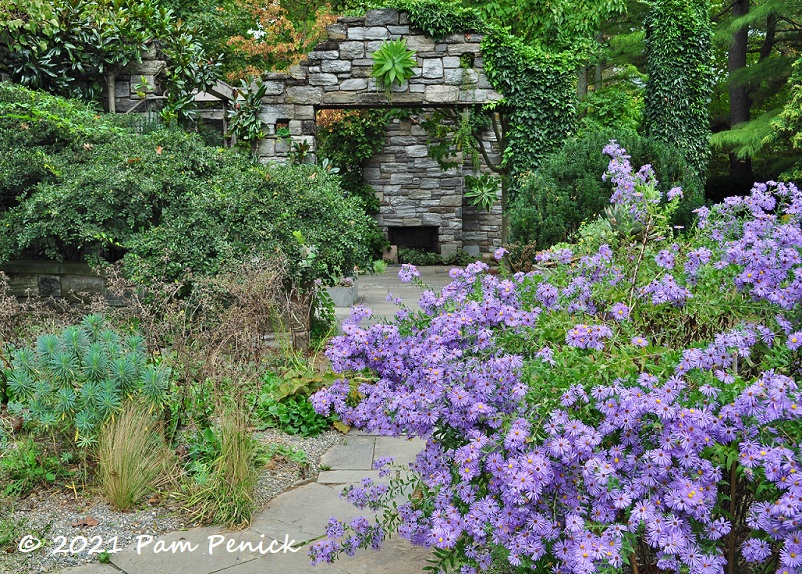
You can approach the ruin garden from all sides, each offering its own pleasures. A flagstone patio awash with ‘October Skies’ asters, grasses, and succulents makes up the “formal” entrance.
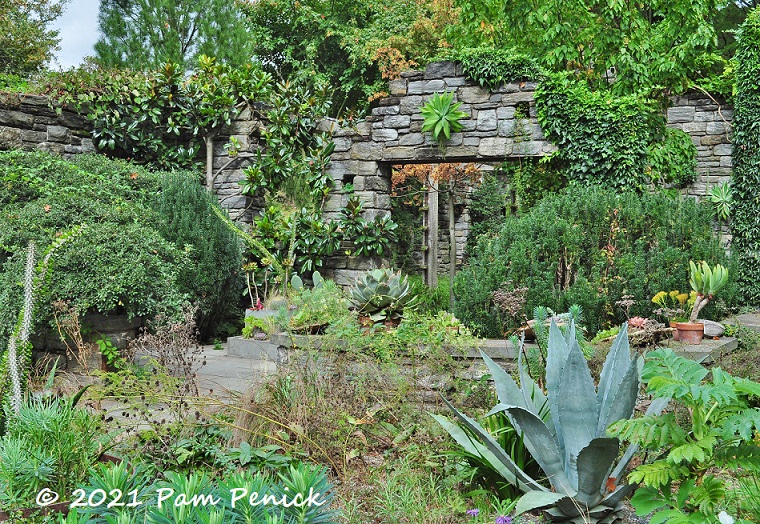
Low walls, rectilinear planters, and hypertufa troughs create a sense of enclosure and a meandering path for visitors to follow. Agaves and other dry-loving plants thrive here, where the sunny gravel garden gives way to the vine-cloaked, swallowed-by-encroaching-forest vibe of the ruin. I’ll come back to this patio from inside the ruin.
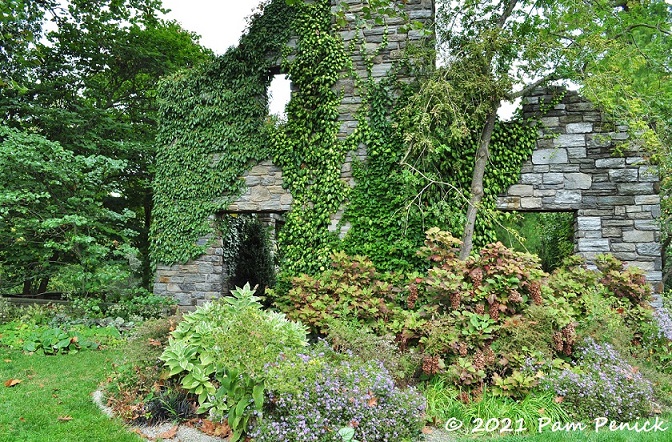
Let’s enter by the tall chimney wall that seems to be crumbling away under tendrils of creeping vines.
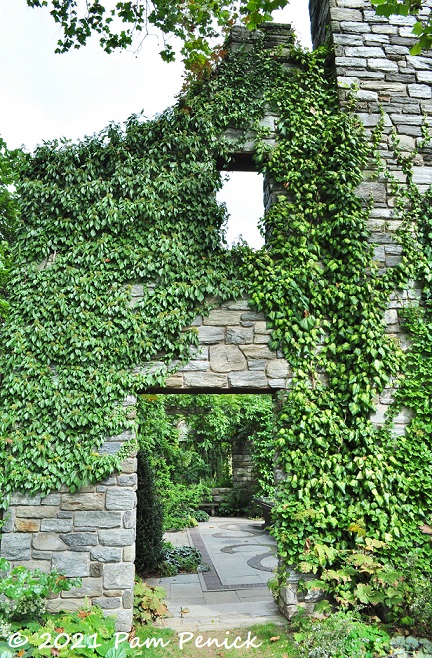
As I wrote in 2016:
“The Ruin is a folly resembling an old, crumbling house that’s being overtaken by sapling trees, vines, and shrubs — the triumph of nature. But of course it’s all an illusion (the structure was built in 1999), enhanced with clever allusions. A ruined library with stone books entitled Woods, Thank Flora, and Moss reminds us of nature’s ultimate dominance. A dining hall is anchored by a water feature that evokes a banquet table and, disquietingly, a sarcophagus. Marble faces float just underwater in a small fountain, like drowned ghosts. It’s all a bit eerie, but in a magical, fairy-tale-forest sort of way.”
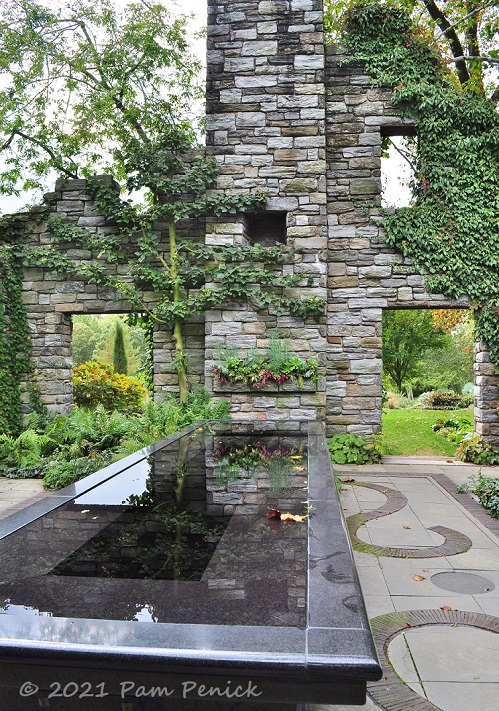
Within the roofless structure, hollowed-out doors and windows frame views of the surrounding gardens. Meanwhile nature, or so it seems, is busily recolonizing the interior walls, floors, and even a big, black dining table.
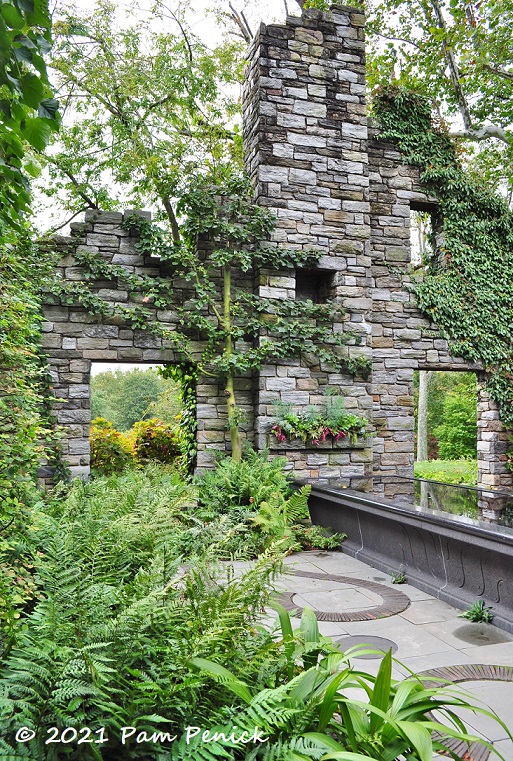
A tree espaliered along the stone wall clings like a vine itself.
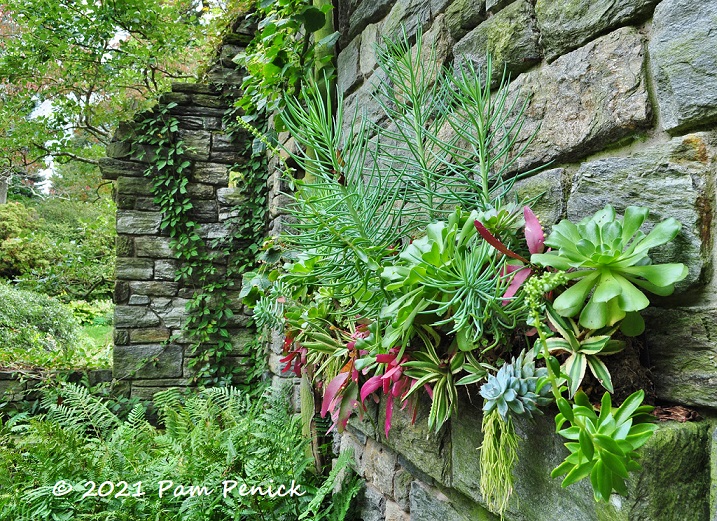
A stone mantle overflows with succulents
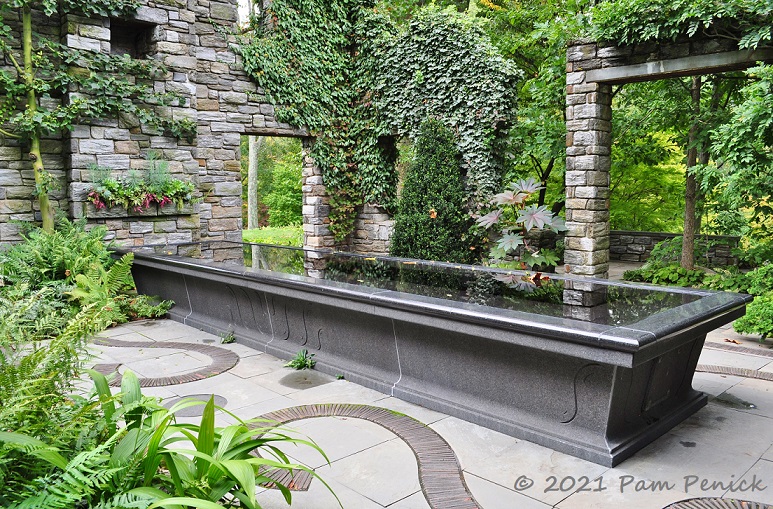
Black mirror — a haunting, ambiguous water feature
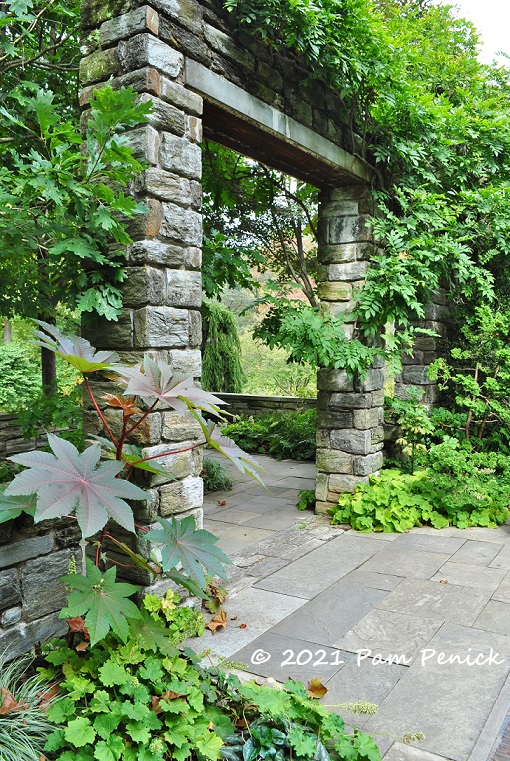
Interior doorway
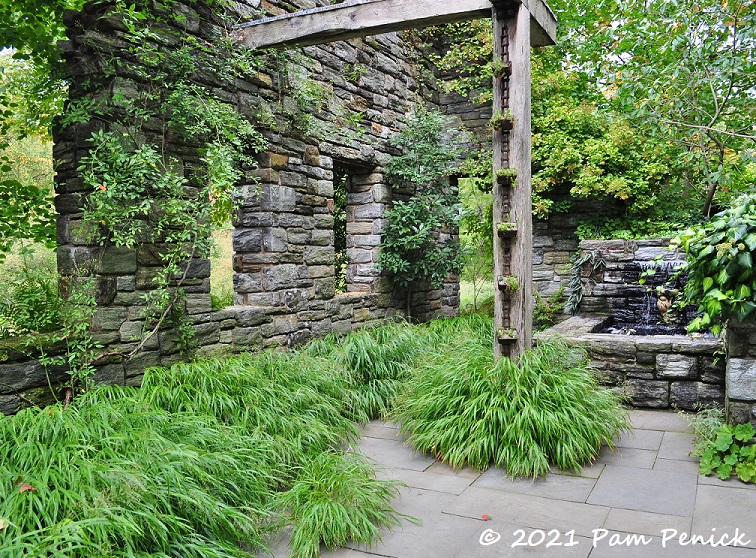
Japanese forest grass has colonized this room. Hanging from a timber post, a bucket elevator chain is planted up with sedum and other small succulents.
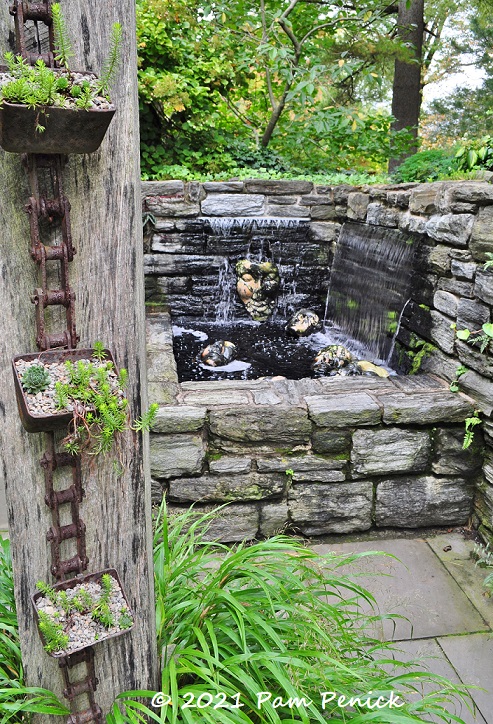
In the back corner, water sheets into a raised pool, where mottled stone faces “float” on the surface.
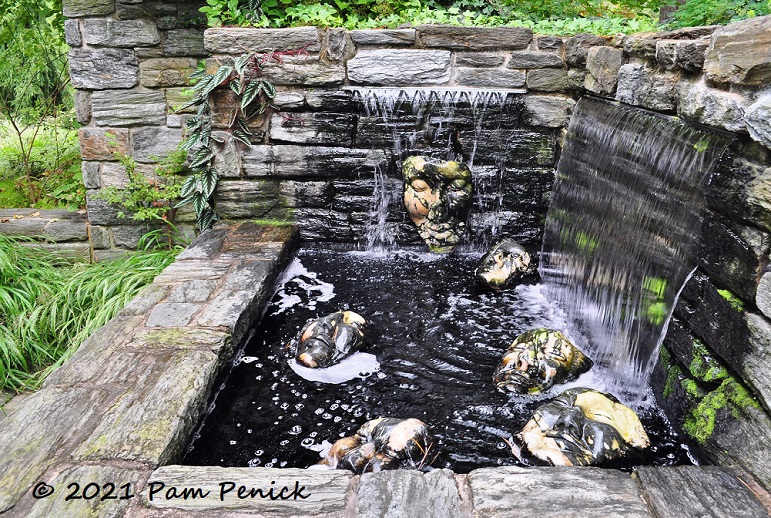
They slumber peacefully, their upturned faces just above the surface.
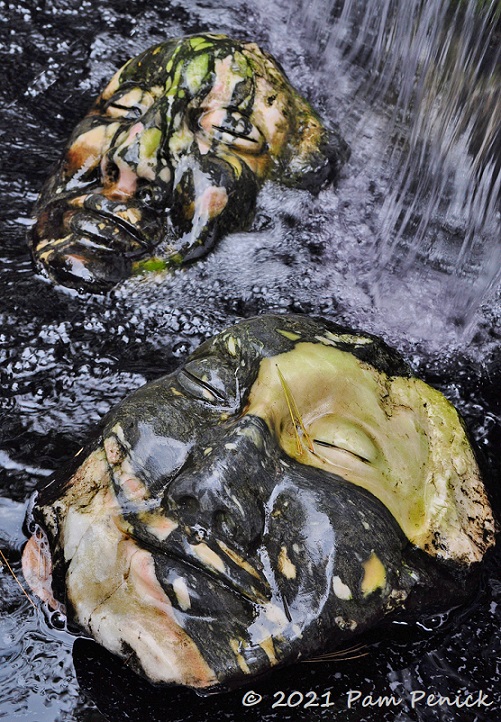
Dreaming of days of old?
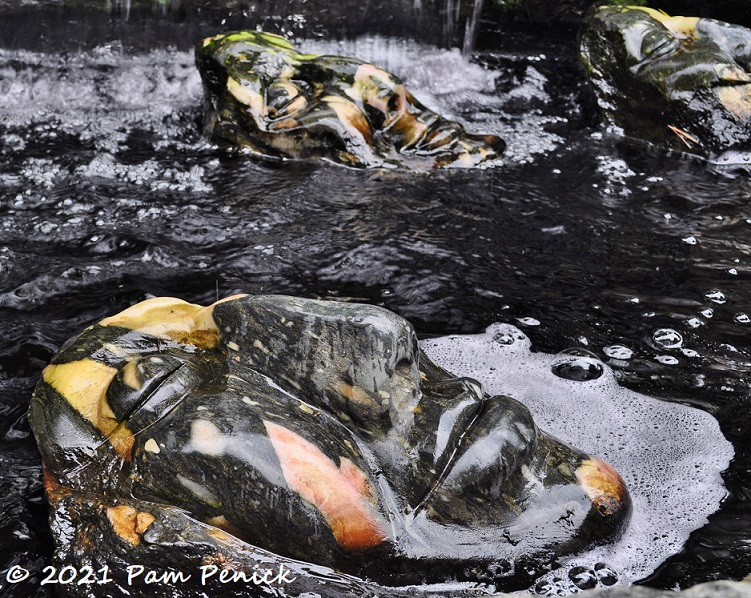
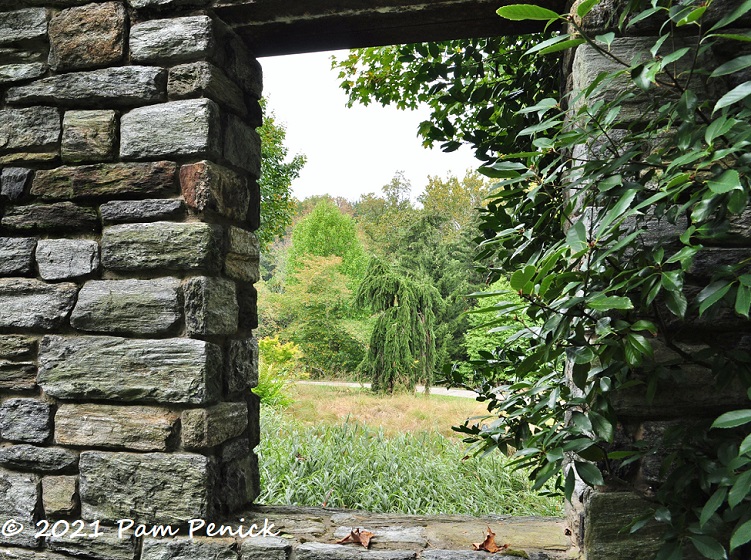
This window overlooks a somber weeping conifer.
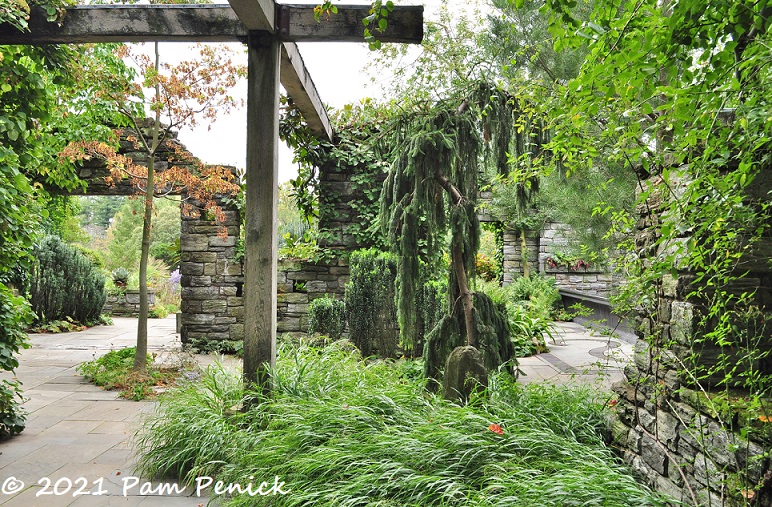
There’s another in the room.
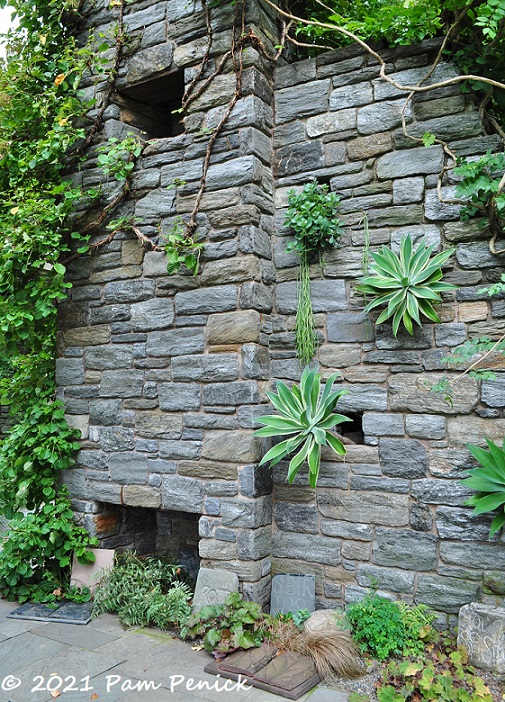
A second fireplace wall is studded with variegated agaves and other succulents tucked into clever planting pockets. Stone books lean against the wall and lie open on the floor, begging to be read — though not picked up. This, it seems, is the library.
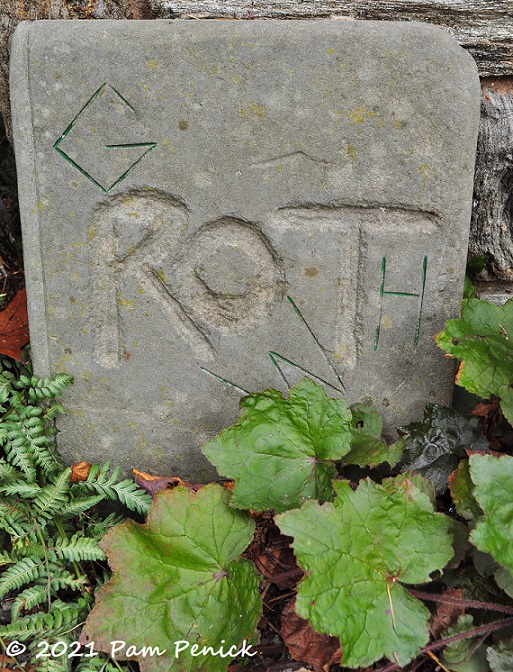
“ROT” has been amended with green letters to read “gROwTh.”
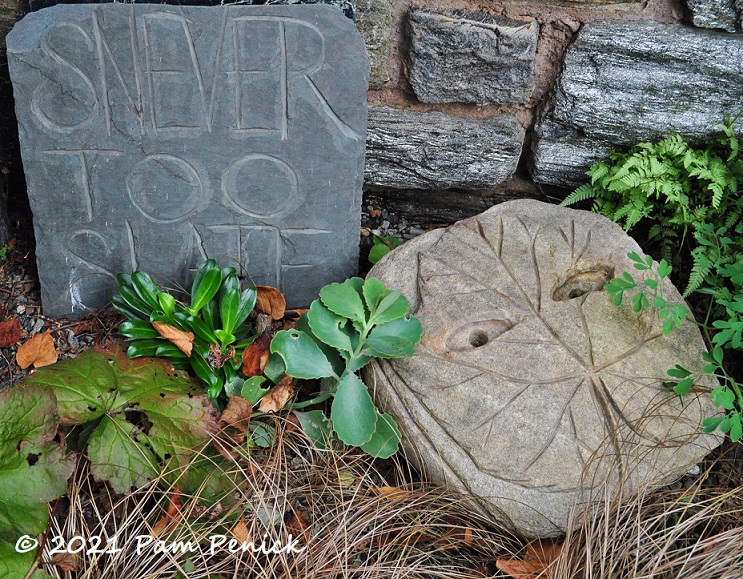
Another book carved from a slab of slate cheekily reads, “Snever Too Slate,” as a leafy stone face peers at you. I’m fairly sure these pieces are the work of Berkeley sculptor Marcia Donahue.
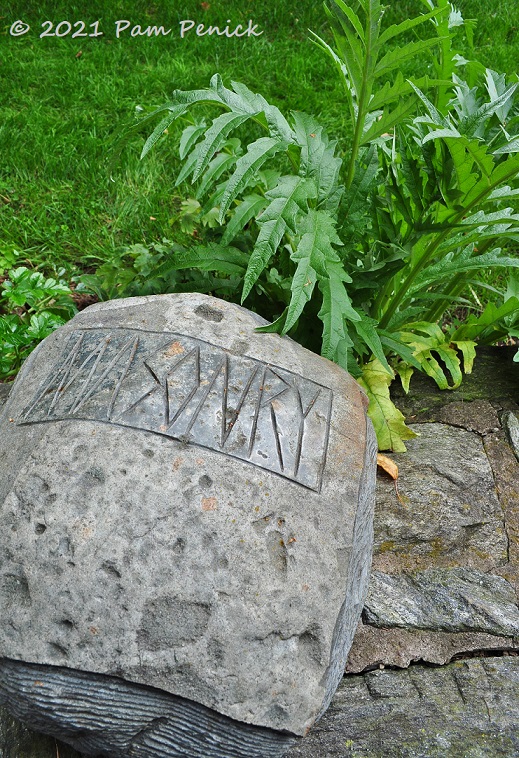
Another lumpy stone book is titled Masonry.
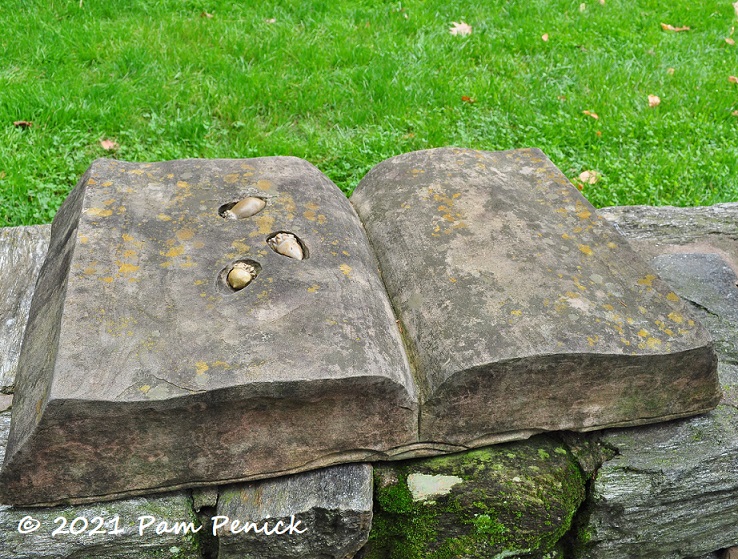
Yet another lies open to reveal acorns magically pressed into its pages.
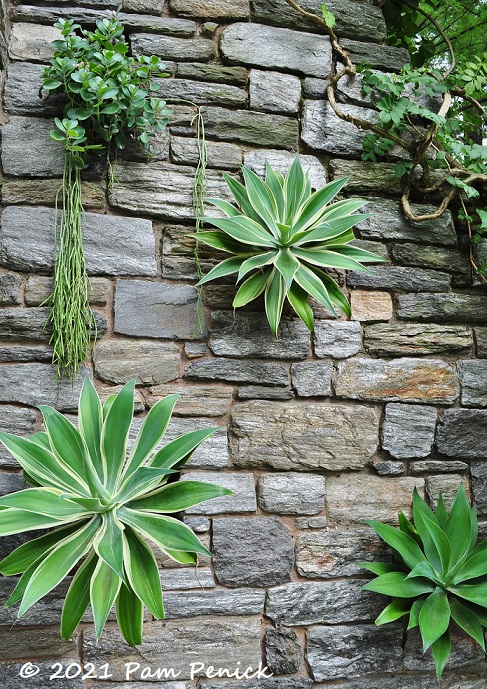
Let’s have another look at the delightful agave wall.
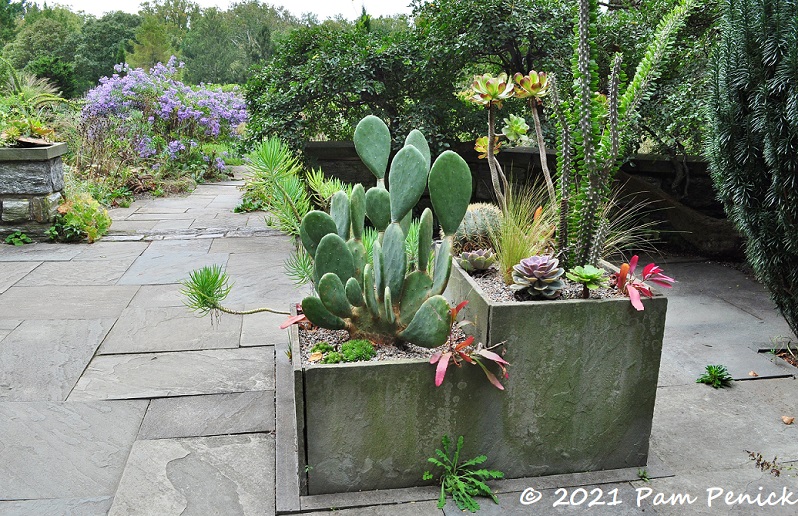
Now we’ve circled back around to the formal patio, where beautiful succulent planters crop up amid the pavers.
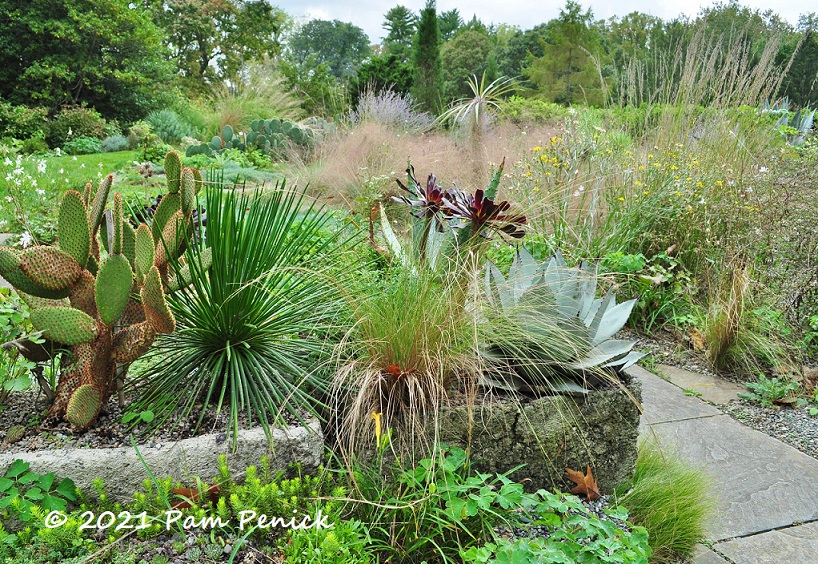
Hypertufa planters hold agave, opuntia, Mexican feathergrass, aloe, and other succulents against a backdrop of the grassy gravel garden.
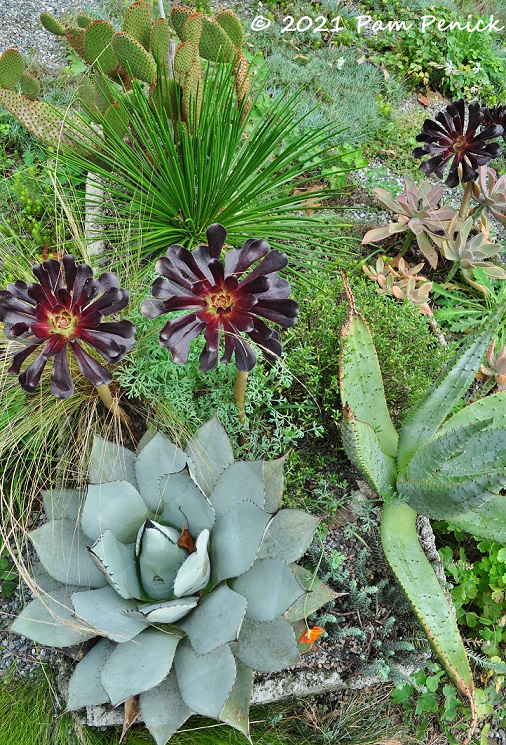
Planter detail
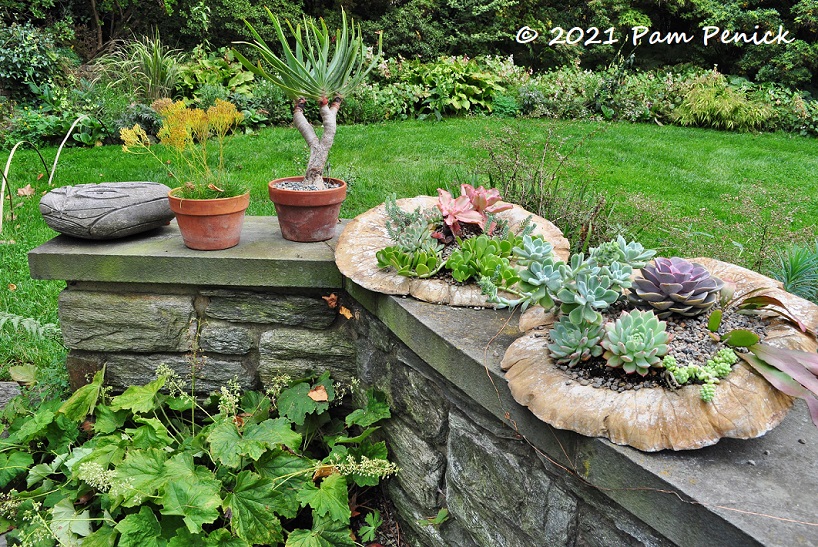
Oyster mushroom planters? I love how casually these potted plants sit on the wall, as if in someone’s private garden. Another carved stone face watches at the end.
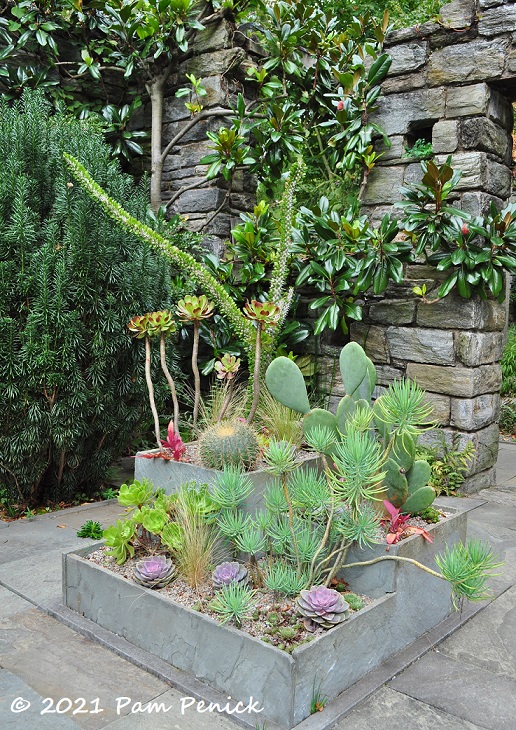
Swoon!
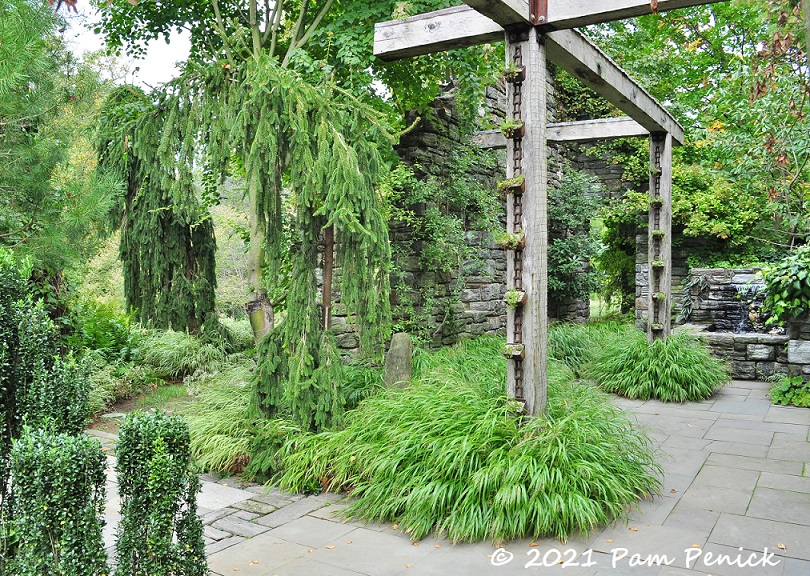
Back through the sleeping faces room and bucket elevator succulent planters
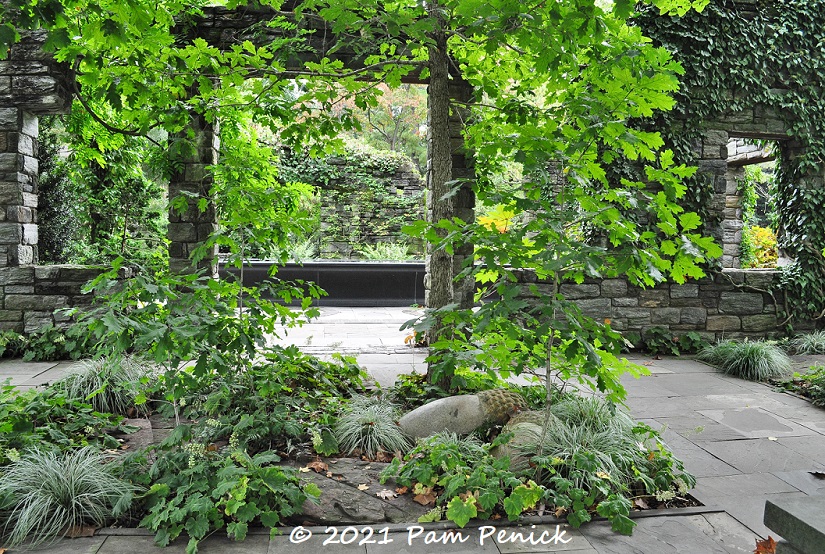
I like this foresty vignette: oak saplings sprouting from cracked paving, large stone acorns at their feet. The sedgey and leafy groundcover plants are woodsy perfection too.
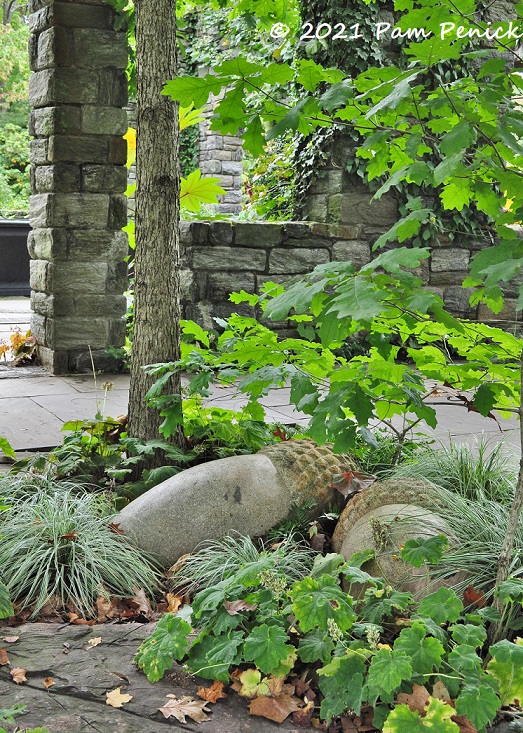
A closeup
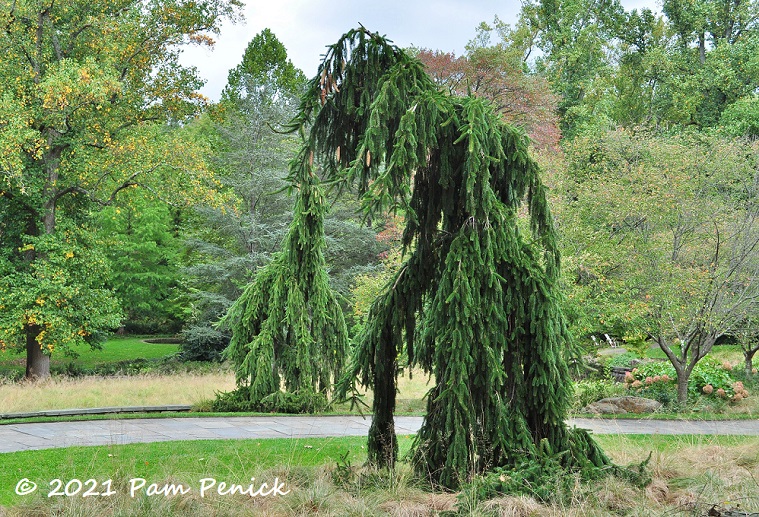
Outside the ruin pace restless, ghostly trees — weeping Norway spruce.
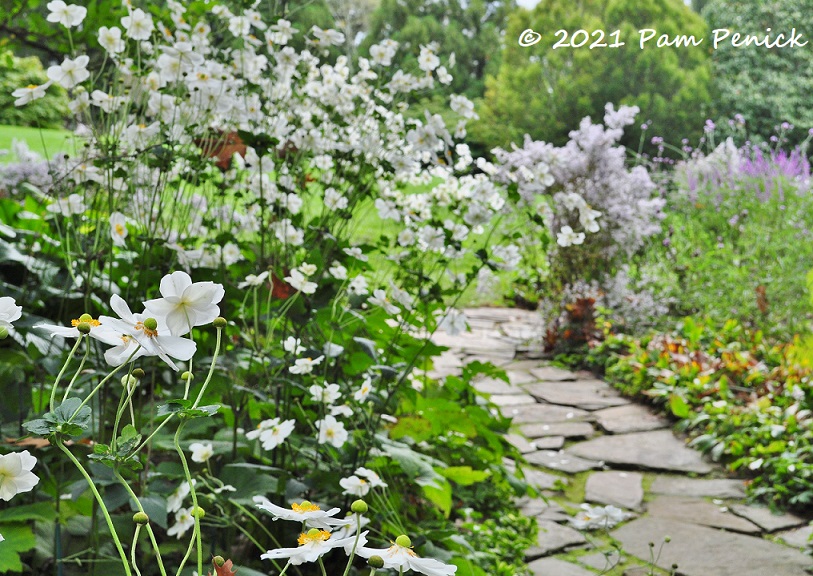
Lightening the mood, white Japanese anemones flower along another path.
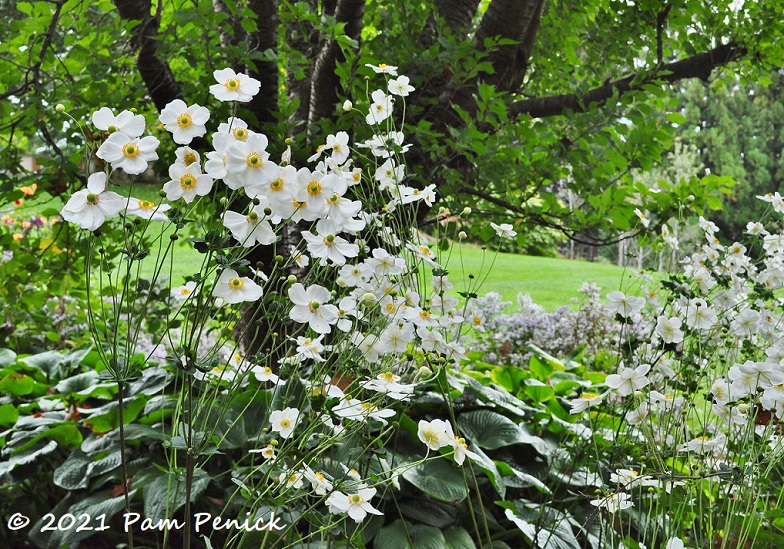
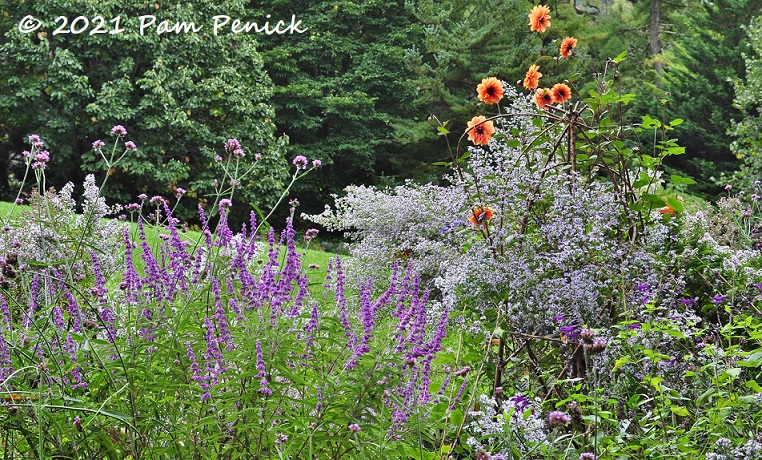
Tall verbena, Mexican bush sage, dahlias, and asters…
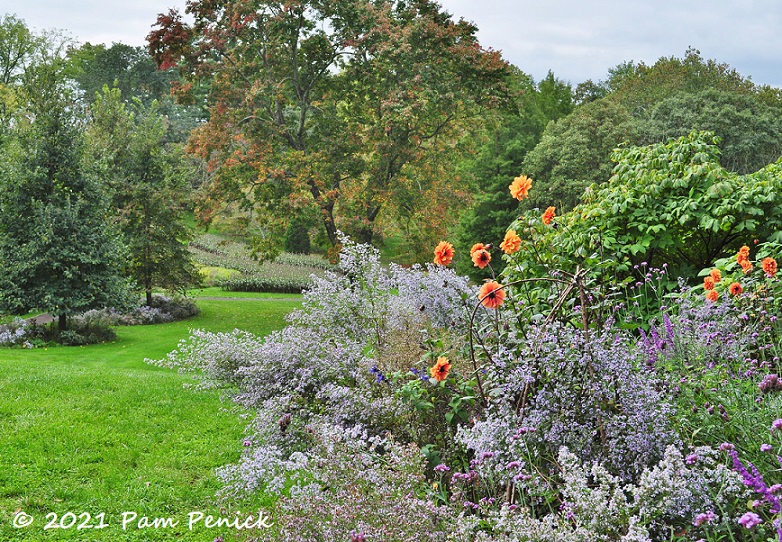
…and a tree just turning orange in the distance, echoing the dahlias.
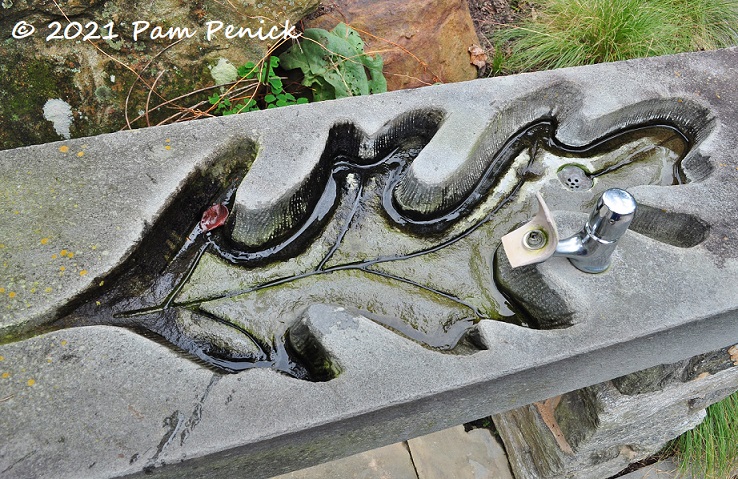
The oaks have left their mark on the ruin, even imprinting a leaf into a drinking fountain.
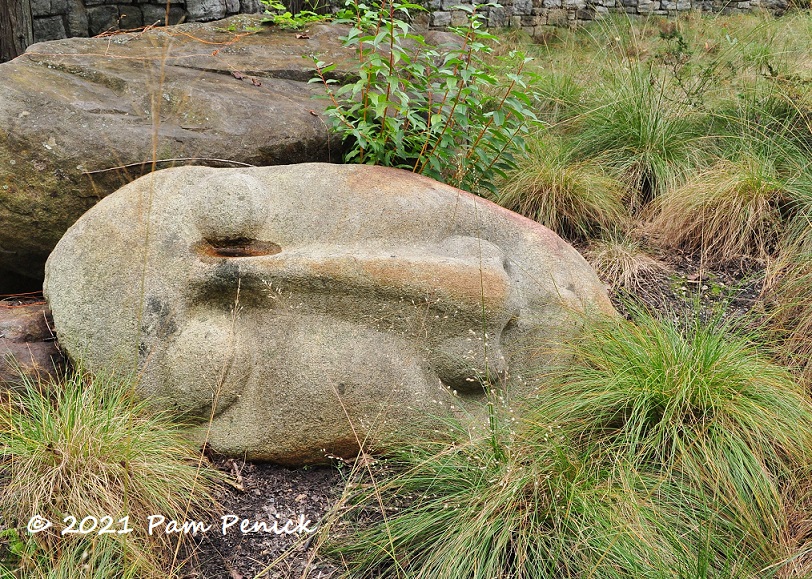
Another dreaming face in a bed of prairie dropseed
Up next: Chanticleer’s bold Teacup Garden and Tennis Court Garden. For a look back at Chanticleer’s flowering Gravel Garden, click here.
__________________________
Digging Deeper
Need design help with your yard? Hire me as your personal garden coach! Maybe you need replacement plant ideas after the big freeze. Or maybe your landscaping has grown tired, and you want fresh curb appeal. Or perhaps you’re ready to get rid of some lawn and create a pollinator garden, bird habitat, or hangout space for you and your friends. I’m here to help! Contact me to let me know what’s going on, and let’s figure it out together. My range is Austin and suburbs within a 25-min. drive of NW Austin, but I’m flexible and can travel farther with a surcharge, so let me know where you are. Weekday morning appts. only.
Come learn about gardening and design at Garden Spark! I organize in-person talks by inspiring designers, landscape architects, authors, and gardeners a few times a year in Austin. These are limited-attendance events that sell out quickly, so join the Garden Spark email list to be notified in advance; simply click this link and ask to be added. Season 8 kicks off in fall 2024. Stay tuned for more info!
All material © 2025 by Pam Penick for Digging. Unauthorized reproduction prohibited.


Pam, I thank you for the tour of this garden. I will get there someday! It seems October had its own lush hand visible in this garden. There is an advantage to seeing a garden when it is on the seasonal wane.
Fall is my favorite season for Austin gardens, which has influenced my decision to see other gardens in fall too. I haven’t been disappointed yet in visiting far-flung gardens at less floriferous times.
I love this so much! (well, most of it…) Thanks for the extensive photo collection.
Thinking to the convo over on your Instagram page about securing the agaves in the wall… these all appear to be Agave attenuata, which are actually surprisingly light, their thin leaves do not retain as much water as say Agave weberi or Agave ovatifolia. Since they also grow long trunks it wouldn’t be too difficult to treat that planting pocket like a vase and tuck them in with a bit of soil. However, since they’re also extreme wimps when it comes to cold I bet they were yanked out of that wall not to long after your visit.
Ah, good to know about the weight of Agave attenuata. I bet you’re right. And yes, they must be protected from cold weather. I wonder about the size of their greenhouses, since they have so many cool plants that must be overwintered!
I love this garden. Seeing the agaves sticking out of the ruin’s wall has renewed my interest is getting one or more rooted in my short stacked-stone wall. I need to start with a smaller pup this time…
Yes, Kris! I can’t wait to see how you do it.
Love that Folly and all the carved stone…
It’s so good!
I have a *lot* of stone on the outside of my house – tempted to try some planting pockets or even window boxes like that stone mantel!
That would be cool, Caroline. A Texas incarnation!